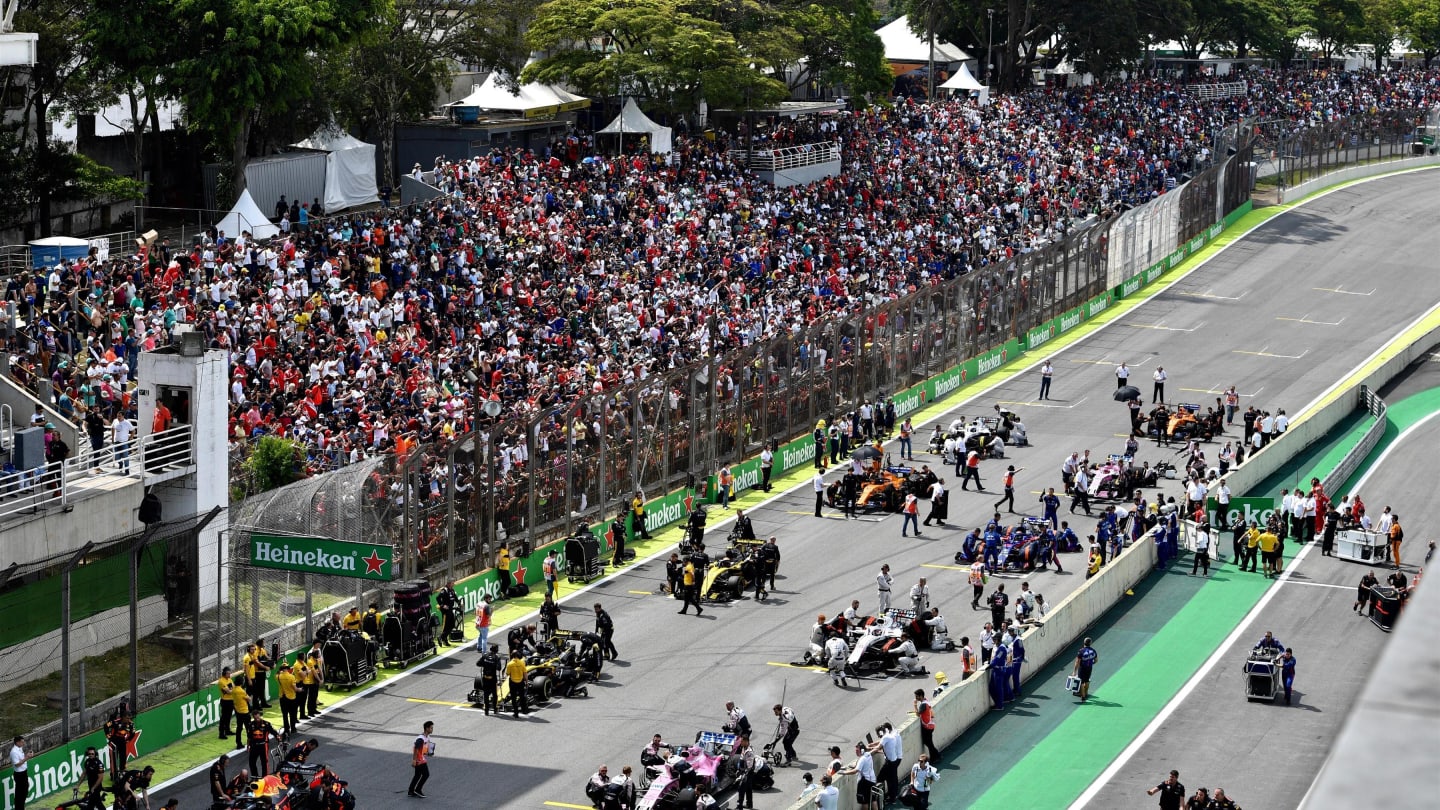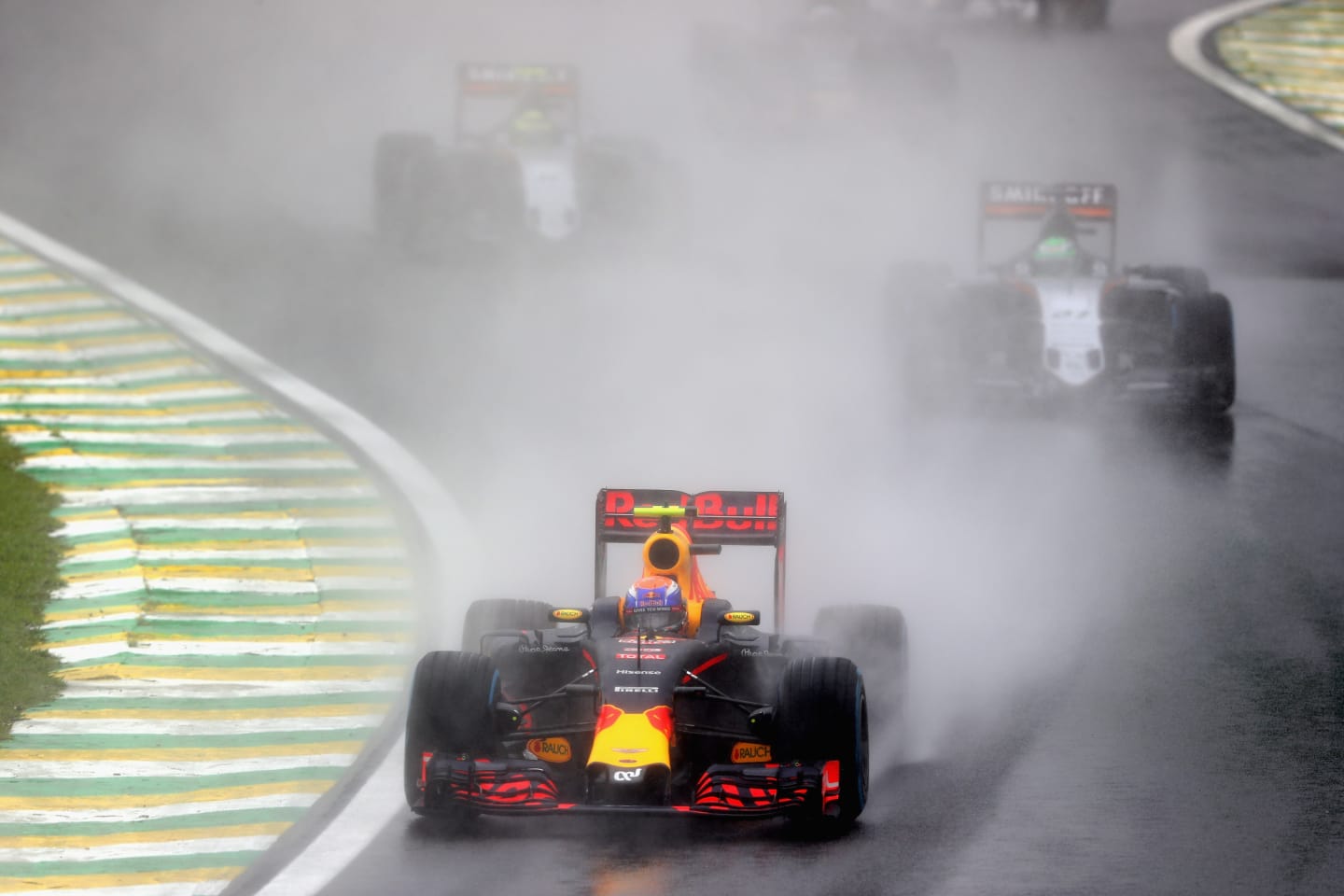
Feature
5 Reasons We Love... The Brazilian Grand Prix

Share

Nineteen down, two to go and both championships have been won. But there is still plenty to play for at this weekend's Brazilian Grand Prix. Here's why we love going racing at Interlagos…
1. An iconic venue
Interlagos is steeped with history (more on that later) but it is also a venue that has become synonymous with Formula 1.
The sight of the whole field barrelling through the Senna S at the start of the lap is one that just fits, while the wide, flat kerbs and short lap all just add to the Autodromo Jose Carlos Pace’s uniqueness.
It might be one of the highest venues on the calendar - behind only Mexico City - but it’s also one of the shortest at 4.309km, as only Mexico and Monaco cover less distance. And yet within that is 43 metres of elevation change between the highest point on the approach to Turn 1 and the lowest point at Turn 5.
The undulating pit straight that is flanked by a high pit wall and big grandstands leads to a cauldron-like atmosphere on the grid, that also make the pre-race happenings and the post-race podium even more special.

2. A country with rich F1 history
Ayrton Senna, Nelson Piquet, Emerson Fittipaldi, Felipe Massa, Rubens Barrichello, Carlos Pace… Brazil has had a habit of delivering exciting racing drivers.
The circuit might be named after Pace, but Senna is still worshipped like a God in the country, and Sao Paulo is no exception. The Ayrton Senna Institute is based in the city, while his grave is located in Morumbi Cemetery just a few miles from the circuit.
But Interlagos was also the scene of some of his most breathtaking victories, including in 1991 when he finally won his home Grand Prix for the first time and could barely lift his arms above his head such was his pain after battling gearbox issues during the race.
Piquet and Fittipaldi join Senna as Brazilian world champions, but drivers such as Barrichello and Massa have come so close to adding to that tally and have provided the Brazilian fans with magical moments in the past. Only the United Kingdom and Germany can boast more world championships than Brazil, with the total of three individual world champions level with Germany and second only to the UK.
SENNA TRIBUTE: Massa, Fittipaldi and more at last weekend's festival in Sao Paulo
3. The fans
We have highlighted the fans at a number of races recently, but each of those venues have had their own unique atmosphere and Interlagos is no different.
As referenced in the first section, the atmosphere on the grid is spine-tingling as the fans stand steeply above all those working on the track ahead of the race. When a Brazilian driver is pushed towards the front of the grid, it somehow goes up another level…
The whole first sector is flanked by fanatical supporters, all spending the majority of the race on their feet from the run out of Juncao to the finish line and down to Turn 4.
So many drivers enjoy loud encouragement at Interlagos and will do so this weekend by an almost football-like crowd, but those flying the Brazilian flag receive something else.

4. Memories of dramatic championship deciders
Interlagos used to be the final race of the season, and with that came some of the most dramatic title deciders in history.
More recently, the championship has either been sealed already or gone down to the last round in Abu Dhabi, but if we rewind to 2012 Interlagos saw the culmination of an epic battle between Sebastian Vettel and Fernando Alonso. Championship leader Vettel was hit and spun on the opening lap, opening the door for Alonso, but the German fought through in a damaged car to score the points needed to take a third consecutive crown.
It was more heartache for Alonso who had similarly missed out in an absolute epic in 2007, when Lewis Hamilton looked set for the title before a gearbox glitch dropped him down the order early in the race, and a fightback proved in vain as Massa moved over for Ferrari team mate Kimi Raikkonen to snatch the title from the two McLaren drivers by a single point.
WATCH: The 2019 grid on 'racing icon' Ayrton Senna
Yet, somehow, an even more sensational finish to a season was to come a year later, when underdog Massa won in dominant fashion but the weather intervened to spice up the race. Hamilton, needing only fifth place to win the title in his second season, had dropped to sixth behind Vettel in the rain but passed a labouring Timo Glock - who was on slick tyres - at the final proper corner of the race to re-gain fifth and the points needed for a stunning title win.
The sight of a tearful Massa pumping his chest in front of the emotional home support remains one of Interlagos and F1’s most iconic podium images.
BRAZIL: 5 shock moments from F1 history
5. Unpredictable weather
A big part of those championship deciders has been the weather, especially in both 2008 and 2012. The first one of those was almost scripted with rain hitting the circuit late and causing all sorts of chaos.
And it is not uncommon for rain to hit at some stage during a race weekend. Even if it is on Saturday it can have a major effect on events - anyone remember Nico Hulkenberg taking pole position as a rookie for Williams back in 2010?
It’s not even worth checking the weather forecast at this stage because a bit like Spa-Francorchamps it can just change out of seemingly nowhere, and deliver some thrilling races like in 2016 when Max Verstappen further announced himself with an incredible performance (pictured below) to finish second behind the equally outstanding Lewis Hamilton.
Interlagos + rain = a chance for the greats to shine.

YOU MIGHT ALSO LIKE
News Binotto expands on key area where Kick Sauber need to change after being in 'survival mode'
Feature Lawrence Barretto’s 5 bold predictions for the 2025 season – how many will come true this year?
News Alpine confirm Williams super-sub Colapinto as reserve driver for 2025 season
Feature Who is Andy Cowell? All you need to know about Aston Martin’s new F1 team boss




